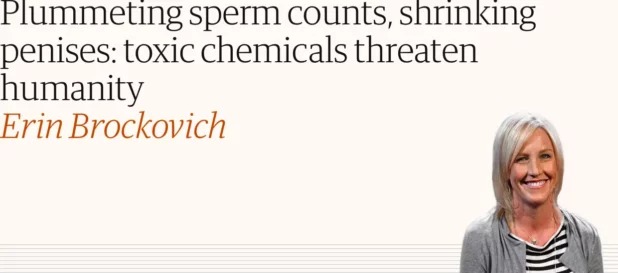These chemicals have been well understood since at least the 1990s.
It is absolutely beyond the pale that the government continued to allow them to flood the environment, to flood our bodies.
This is the same government that ignores the obesity crisis, while also trying to force you to be injected with an experimental DNA-altering gene therapy on the premise that it will prevent people in the 80s and 90s from dying of the flu.
“Forever chemicals” are in our drinking water sources, sea foam and spray, rain and groundwater, sea ice, and even human blood – so now efforts are increasing to detect, remove and destroy them.
With increasing evidence linking per- and polyfluoroalkyl substances (PFAS) with cancers, birth defects and negative effects on the immune systems of humans and animals, pressure is growing to restrict these handy waterproofing chemicals that are in everything from Teflon pans and medical devices to cosmetics and pizza boxes.
According to Nijhuis Saur industries, which has built more than 80 technologies to treat forever chemicals such as the banned or restricted PFOS, PFOA and PFHxS, these PFAS are difficult and expensive to remove and destroy.
“They are called the forever chemicals, because they cannot be removed easily, they don’t break down very easily, so they will persist forever,” said Wilbert Menkveld, chief technology officer, at the Aquatech Amsterdam conference. “And we are talking about very small concentrations: one nanogram per litre is like one glass of cola in a million tankers.”
…
Dr David Megson, a senior lecturer in chemistry and environmental forensics at Manchester Metropolitan University, said some pollutants were not even being tested for, there was no standard testing protocol for many compounds, and legislation was lagging.
Yep.
They don’t even bother testing for it.
If they have no data showing the levels, they don’t have to do anything about it.
“There is no consistency in approach, especially on a global level,” he said. “The US have committed to doing a studies and testing, within Europe there’s a lot going on – in Sweden in particular – and five years ago in the UK we were really behind the ball. People are doing more routine monitoring, but the number of PFAS we need to be worried about has gone from two, to 17, to 47 and now we could have 14,000. By the time a two-year monitoring programme has been performed, it’s almost obsolete.”
According to journalists and academics contributing to the Forever Pollution Project, there are 20 manufacturing facilities and more than 2,100 sites in Europe that “can be considered PFAS hotspots”.
Last year, Chemours, DuPont and Corteva agreed to pay $1.185bn to settle liability claims from American public water systems over PFAS contamination. The chemical company 3M has agreed to settle similar lawsuits in America, while the government of Flanders and 3M announced a €571m remediation agreement last year, and the Dutch government wants to hold the firm liable for pollution linked to a Westerschelde factory. But even with the cash, cleanups are complex.
The type of treatment currently being used depends on whether the pollutants are short- or long-chain chemicals, as well as their combination and whether the aim is to separate them from the water or also to destroy them.
“The longer the chain is, the better it absorbs; short chains are quite hard to reach, so you need a very selective [technology],” said Menkveld. “You can concentrate PFAS, but you have to have a destruction technology at the end.”
The most feasible and developed technologies, according to a review he cited by Blue Tech Research in March, include nanofiltration or reverse osmosis, using a special membrane to separate out larger particles from drinking water.
There is no profit in dealing with these chemicals.
The profit is all in creating new taxes and building electric cars and windmills – both of which further flood the earth with these chemicals – to try and change the weather.
If people were gluing their faces to the street to stop forever chemicals, I might get behind it.



